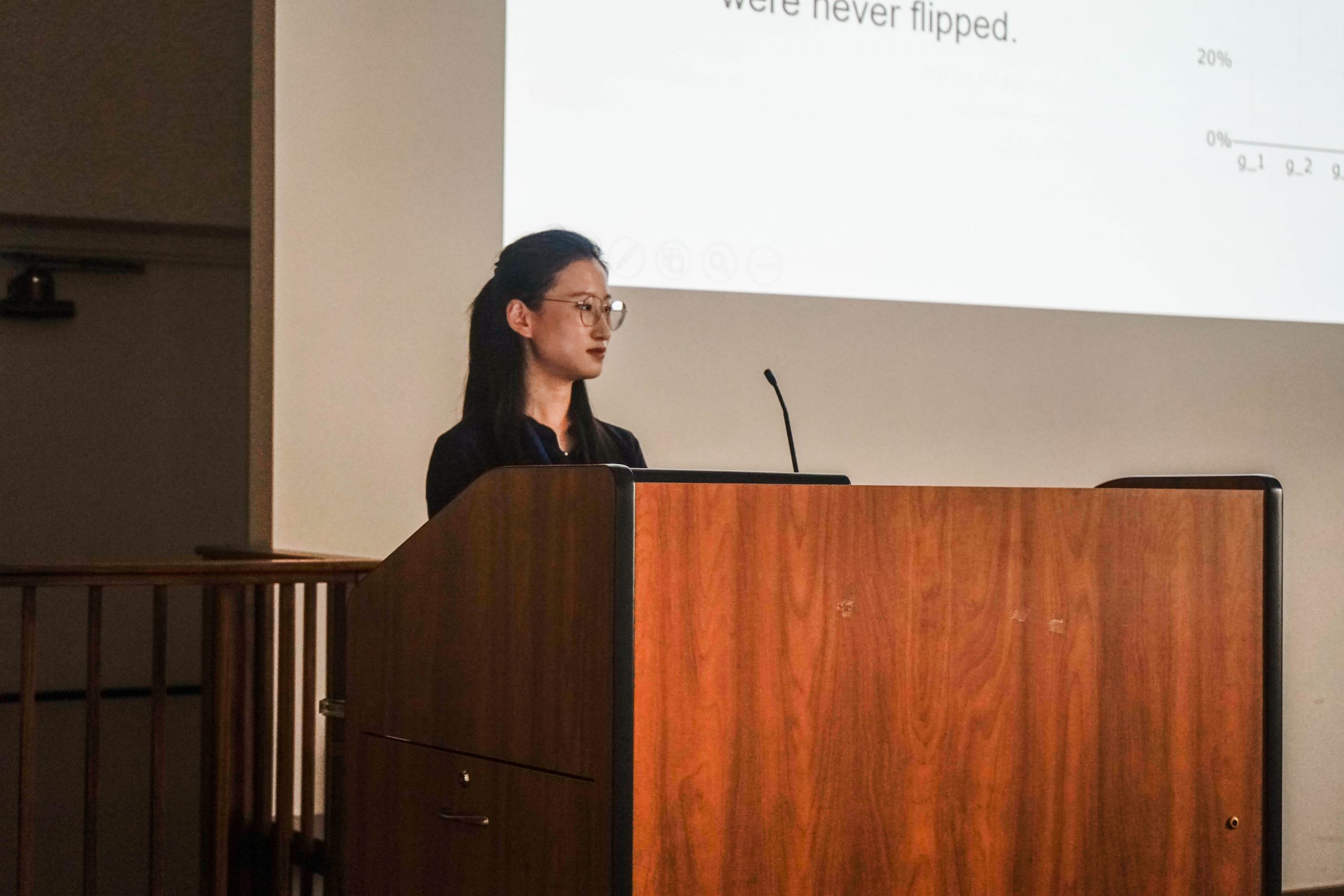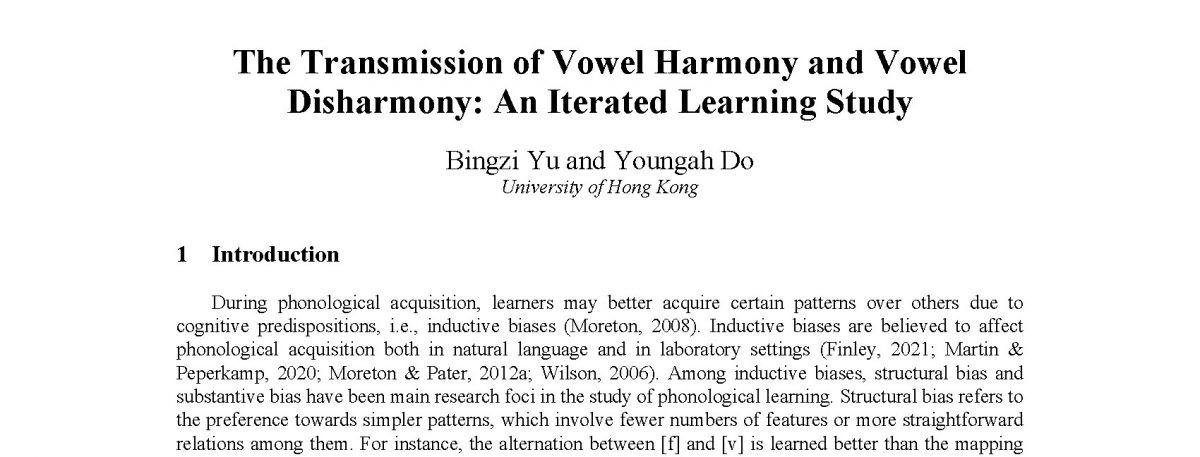
Bingzi and Youngah’s study “The Transmission of Vowel Harmony and Vowel Disharmony: An Iterated Learning Study,” has recently been presented at the 2022 Annual Meeting on Phonology. The paper explores the role of a cognitive predisposition known as the substantive bias in the acquisition and transmission of phonological patterns, focusing on the asymmetry between vowel harmony and disharmony, two phonological patterns that differ in their phonetic motivation and frequency in natural languages.
Previous research has shown that learners may better acquire certain patterns over others due to their cognitive predispositions, known as inductive biases. Structural bias refers to the preference towards simpler patterns, while substantive bias refers to the tendency to more readily acquire phonetically motivated patterns. While the effect of the substantive bias on phonological learning has not always been detected, studies have constantly provided evidence for the structural bias.
The paper aims to explore the role of substantive bias during the course of language transmission. The authors used the iterated learning paradigm, which involves one or multiple participants representing one generation, who are asked to learn and replicate the target behavior from the predecessor. The output of a generation is used as the input for the next generation, and the learning procedure stays the same for every iteration. The experiment contained two conditions, the natural condition where participants learned vowel harmony patterns and the unnatural condition exhibiting vowel disharmony patterns.
The results showed no general difference between the diachronic changes of vowel harmony and vowel disharmony, indicating that both patterns are equally able to survive through long-term transmission. The experiment results are not in alignment with typological data, on which the authors noted that it might be due to the design of the transmission chain, which relied solely on learning from a single participant in each generation. The authors suggest that future work may involve interaction into the experimental paradigm to explore other potential mechanisms through which the substantive bias influences phonological transmission.
The findings suggest that while the substantive bias may play a role in phonological learning, it may not have a significant impact on language change through iterated learning, at least at the population level.
Yu, B., & Do, Y. (2023). The Transmission of Vowel Harmony and Vowel Disharmony: An Iterated Learning Study. Proceedings of the Annual Meetings on Phonology, 10, Article 0. https://doi.org/10.3765/amp.v10i0.5439
file_download PDF
